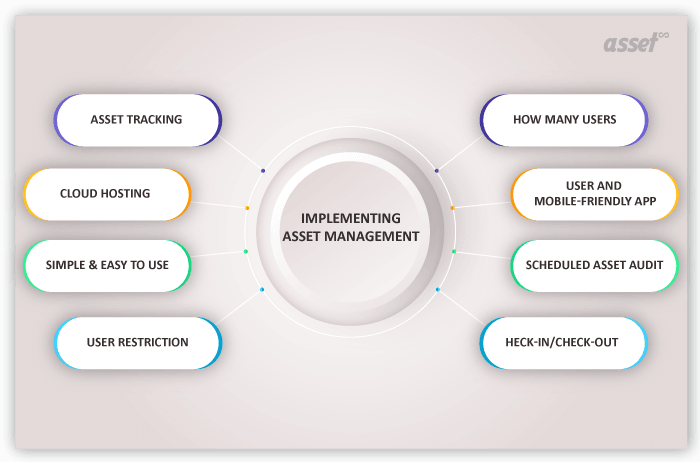Have you ever thought of implementing Asset Management System in your organization?
Let's say, you have decided to implement an Asset Management System in your organization. Good decision! Now it's important to know what features it must have to give the best possible outcome. Also, to increase the lifespan of the asset for your organization.
However, for that, you need to ask some questions to yourself before implementing an Asset management system such as what is your organization's requirement? Will this system fulfill the needs? How effective this system would be? Who will use this system? Once you have the answers to these questions then you look for below-mentioned features.
Asset Management System Top Features:

1. Asset Tracking
The most basic yet most powerful feature is asset tracking. It lets you know the exact details on a real-time basis. Secondly, it assists you in scheduling the maintenance of the asset. Also plays a vital role in increasing the lifespan of an asset.
2. Cloud hosting
For a great Asset Management System, you require to look for information about an asset from anywhere. When the software is cloud-based it is much easy to access from a browser around the world. From any device such as a mobile, tablet, etc. This feature really comes in handy where you are traveling or away from the office.
3. Simple & Easy to use
As we already have too many problems in our life, we don't want to add another one. Right? Therefore, try to implement software that is very easy to use on a daily basis. Similarly, finding reports should not be a complex process to try to keep it simple. That's why a personalized asset management system should be assistive, simple yet effective.
4. User restriction
User restriction is very necessary to carry accurate data information.
Here is an example. Suppose your organization maintains its assets via a paper-based register and excel spreadsheet. Now multiple users can lay hands to maintain the data in one file. There may be some confusion arising over the asset who has updated information.
This whole scenario can cause chaos and a mismatch of assets and their information. Very chaotic, right? With the correct system, you can make the user restricted to updating the information in order to pass the accurate information. It is also cross-checked by other employees and admins.
How many users
When your organization is small-sized (10-15 employees) or medium-sized (50-100 employees) or if your office has other branches as well or not. Then it's important to know how many users are going to use the system. You would not purchase the software for 10 people usage when you have a medium-size company or Vice and Versa. More users you add more money you have to pay for the system.
5. User and mobile-friendly App
As we have mentioned earlier as the system or app should be as simple as it can & easy to use. It should be mobile-friendly as well as user-friendly. A user should be able to mold the software or app a little bit, e.g. An admin should be able to create & customize fields as per the requirement of the company. So that you maintain the asset information easily.
6. Scheduled Asset Audit -
Auditing is very important for verifying what assets your organization owns and where they're located. The auditing part plays a crucial role while calculating the taxation. The auditing software lets you schedule your own audit timeframe, receive status updates on the process.
7. Check-In/Check-Out -
Check-in check-out is one of the most important features for the software and for your company. It can improve accuracy and reduce the time spent passing out assets and receiving assets. Through the Search option facility, you can find an asset by its name, tag, vendor name, employee name, etc.
Check-in & check-out is very useful for industries or companies who have lots of assets such as School, Hotel, Library, etc. It allows multiple assets to multiple assignees for checking in & out in a single transaction.

Conclusion
Asset Management System aims to reduce cost through improved purchasing, better utilization of assets, better management of the overall asset life cycle. An asset management software can also minimize the risk identified with regulatory compliance.
You can find all the above-mentioned features in Asset Infinity Software & Service. Asset Infinity enables you to create unlimited numbers of users on one platform with a user restriction feature. Asset Infinity is a versatile application in which you can operate administrative work at multiple sites from a single location.
For instance, you can allow users from the manufacturing team to view all the information about the product and item in the app. Asset Infinity App is a one-stop solution for all your business asset maintaining software.

















































.webp)
.webp)
.webp)
.webp)
.webp)
.webp)
.webp)
.webp)
.webp)

.svg)




.webp)
.webp)











































.png)


.webp)



















